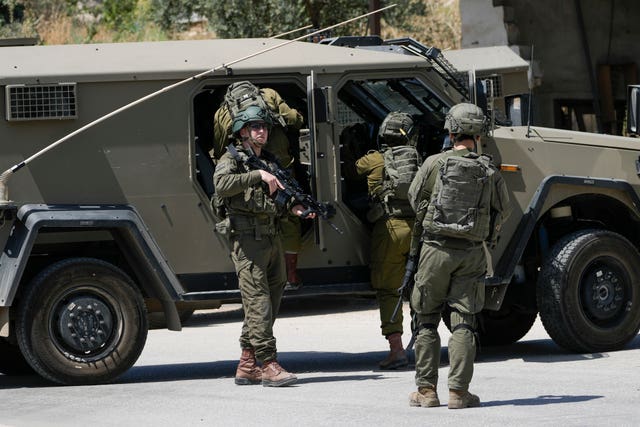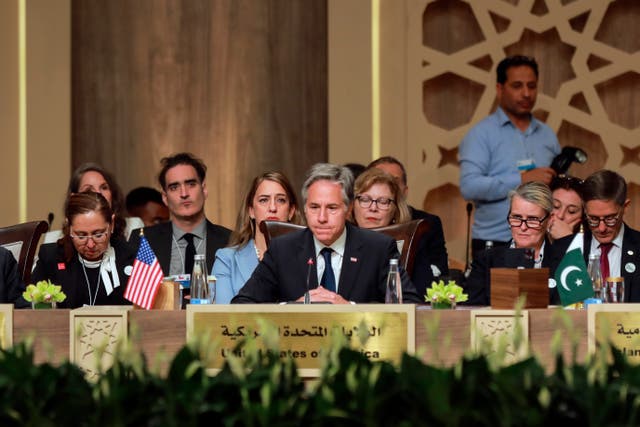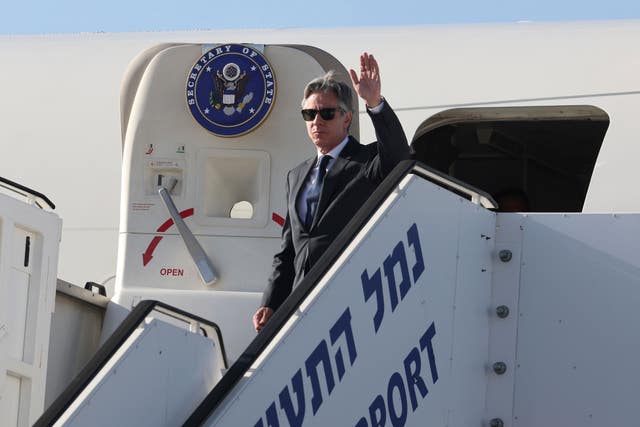Hamas said it has given mediators its reply to the US-backed proposal for a ceasefire in Gaza, seeking some “amendments” on the deal.
It appeared the reply was short of an outright acceptance that the United States has been pushing for but kept negotiations alive over an elusive halt to the eight-month war.
The foreign ministries of Qatar and Egypt – who have been key mediators alongside the US – confirmed that they had received Hamas’s response and said mediators were studying it.
“We’re in receipt of this reply that Hamas delivered to Qatar and to Egypt, and we are evaluating it right now,” White House national security spokesman John Kirby told reporters in Washington.

Hamas spokesman Jihad Taha said the response included “amendments that confirm the ceasefire, withdrawal, reconstruction and (prisoner) exchange”. He did not elaborate.
But while supporting the broad outlines of the deal, Hamas officials have expressed wariness over whether Israel would implement its terms, particularly provisions for an eventual permanent end to fighting and full Israeli withdrawal from Gaza in return for the release of all hostages held by the militants.
Even as the US has said Israel accepted the proposal, Israeli Prime Minister Benjamin Netanyahu has given conflicting signals, saying Israel will not stop until its goal of destroying Hamas is achieved.
US secretary of state Antony Blinken has been in the region this week trying to push through the deal – his eighth visit since Hamas’s October 7 attack on southern Israel ignited Israel’s campaign in Gaza.
On Tuesday, he continued pressure on Hamas to accept the proposal, saying that the UN Security Council’s vote in its favour made it “as clear as it possibly could be” that the world supports the plan.
“Everyone’s vote is in, except for one vote, and that’s Hamas,” Mr Blinken told reporters in Tel Aviv after meeting Israeli officials. He said Mr Netanyahu had reaffirmed his commitment to the proposal when they met on Monday.

In a joint statement announcing that they had submitted their reply to Qatar and Egypt, Hamas and the smaller Islamic Jihad militant group said they were ready to “deal positively to arrive at an agreement” and that their priority is to bring a “complete stop” to the war.
A senior Hamas official, Osama Hamdan, told Lebanon’s Al-Mayadeen television that the group had “submitted some remarks on the proposal to the mediators”, without elaborating.
In a separate development, the UN human rights office said Israeli forces and Palestinian militants may have committed war crimes during the deadly Israeli raid that rescued four hostages over the weekend. At least 274 Palestinians were killed in the operation, according to Gaza’s Health Ministry.
Mr Blinken’s latest visit to the region is focused on rallying support for the ceasefire proposal, boosting the entry of humanitarian aid and advancing post-war plans for Gaza’s governance.
He met privately with families of the hostages as well as demonstrators outside a hotel calling for a ceasefire deal, and later travelled on to Jordan.
The proposal, announced by US President Joe Biden last month, calls for a three-phased plan in which Hamas would release the rest of the hostages in exchange for a lasting ceasefire and the withdrawal of Israeli forces from Gaza. The group is still holding around 120 hostages, a third of whom are believed to be dead.
Mr Biden presented it as an Israeli proposal, but Mr Netanyahu has publicly disputed key aspects of it, saying Israel will not end the war without destroying Hamas and achieving the return of all the hostages.

On Monday, the UN Security Council voted overwhelmingly to approve the proposal, with 14 of the 15 members voting in favour and Russia abstaining. The resolution calls on Israel and Hamas “to fully implement its terms without delay and without condition”.
The proposal has raised hopes of ending an eight-month war that has killed more than 37,000 Palestinians, according to Gaza health officials, and driven some 80% of the population of 2.3 million from their homes. Israeli restrictions and ongoing fighting have hindered efforts to bring humanitarian aid to the isolated coastal enclave, fuelling widespread hunger.
Later on Tuesday, Mr Blinken attended a Gaza aid conference in Jordan, where he announced more than 400 million dollars in additional aid for Palestinians in Gaza and the wider region.
UN secretary-general Antonio Guterres told the gathering that the amount of aid flowing to the United Nations in Gaza for distribution has plummeted by two thirds since Israel launched an offensive in the territory’s southern city of Rafah in early May.
Mr Guterres called for all border crossings to be opened, saying, “the speed and scale of the carnage and killing in Gaza” is beyond anything he has since he took the helm of the UN in 2017.
The war began when Hamas and other militants stormed into Israel on October 7, killing some 1,200 people, mostly civilians, and taking around 250 hostage. More than 100 hostages were released during a ceasefire last year in exchange for Palestinians imprisoned by Israel.

Mr Biden’s announcement on May 31 of the new proposal said it would begin with an initial six-week ceasefire and the release of some hostages in exchange for Palestinian prisoners. Israeli forces would withdraw from populated areas and Palestinian civilians would be allowed to return to their homes.
Phase one also requires the safe distribution of humanitarian assistance “at scale throughout the Gaza Strip”, which Mr Biden said would lead to 600 trucks with aid entering Gaza every day.
In phase two, the resolution says that with the agreement of Israel and Hamas, “a permanent end to hostilities, in exchange for the release of all other hostages still in Gaza, and a full withdrawal of Israeli forces from Gaza” will take place.
Phase three would launch “a major multi-year reconstruction plan for Gaza and the return of the remains of any deceased hostages still in Gaza to their families”.
The conflicting signals from Mr Netanayahu appear to reflect his political dilemma. His far-right coalition allies have rejected the proposal and have threatened to bring down his government if he ends the war without destroying Hamas.
A lasting ceasefire and the withdrawal of Israeli forces from Gaza would likely allow Hamas to retain control of the territory and rebuild its military capabilities.

But Mr Netanyahu is also under mounting pressure to accept a deal to bring the hostages back. Thousands of Israelis, including families of the hostages, have demonstrated in favour of the US-backed plan.
The transition from the first to the second phase appears to be a sticking point. Hamas wants assurances that Israel will not resume the war, and Israel wants to ensure that protracted negotiations over the second phase do not prolong the ceasefire indefinitely while leaving hostages in captivity.
Mr Blinken said the proposal would bring an immediate ceasefire and commit the parties to negotiate an enduring one.
“The ceasefire that would take place immediately would remain in place, which is manifestly good for for everyone. And then we’ll have to see,” Mr Blinken said.




Comments: Our rules
We want our comments to be a lively and valuable part of our community - a place where readers can debate and engage with the most important local issues. The ability to comment on our stories is a privilege, not a right, however, and that privilege may be withdrawn if it is abused or misused.
Please report any comments that break our rules.
Read the rules hereLast Updated:
Report this comment Cancel